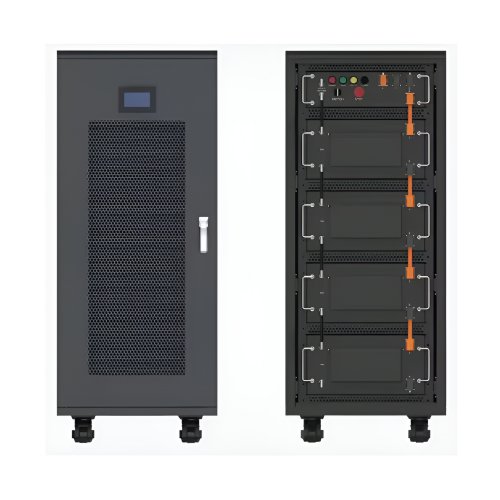Battery Safety Improvements News: Innovations And Strategies Addressing Critical Energy Storage Concerns
The global push towards electrification, spanning consumer electronics, electric vehicles (EVs), and grid-scale energy storage, has placed unprecedented focus on the fundamental power unit: the battery. While energy density and charging speed have long been headline metrics, a critical and non-negotiable factor is now commanding equal, if not greater, attention—safety. Recent incidents involving battery fires have underscored the urgent need for robust safety improvements, driving a wave of innovation and strategic shifts across the industry.
Latest Industry Developments: From Chemistry to Software
The pursuit of enhanced battery safety is a multi-front effort, with significant advancements emerging from material science, cell design, and intelligent software systems.
In the realm of chemistry, the shift towards more inherently stable materials is accelerating. Lithium Iron Phosphate (LFP) cathodes have seen a massive resurgence, particularly in the EV sector, championed by companies like Tesla and Ford. Unlike their Nickel Manganese Cobalt (NMC) counterparts, LFP batteries are far more resistant to thermal runaway, offering a significantly higher thermal threshold before decomposition begins. Concurrently, research into solid-state electrolytes continues to be a major focal point. Start-ups and established giants like Toyota and QuantumScape are making strides in replacing the flammable liquid electrolyte with a solid ceramic or polymer alternative. This fundamental change could virtually eliminate the risk of fire, while also potentially enabling higher energy densities.
Beyond chemistry, hardware and design innovations are proving crucial. Companies are implementing more sophisticated internal safeguards. Contemporary Amperex Technology Co. Limited (CATL), the world's largest battery manufacturer, recently unveiled its latest cell-to-pack (CTP) technology that integrates advanced fireproof materials between cells to isolate thermal events. Similarly, the integration of flame-retardant additives directly into the battery casing and the use of self-healing separators that shut down ion flow upon detecting a short circuit are becoming more commonplace.
Perhaps the most rapidly deployable improvements are in the software and battery management system (BMS) domain. Modern BMS have evolved from simple monitors into predictive safety hubs. Using complex algorithms and real-time data analytics on voltage, temperature, and internal resistance, these systems can now predict potential failures before they occur. For instance, a slight anomaly in the charging curve of a single cell within a massive pack can be detected, and the system can proactively isolate that cell or adjust charging parameters to prevent a cascade failure. This shift from passive monitoring to active prevention represents a quantum leap in operational safety.
Trend Analysis: A Holistic and Regulatory-Driven Approach
The trends in battery safety point towards a more holistic, system-wide approach. It is no longer sufficient to focus solely on the cell; the entire ecosystem, from manufacturing to end-of-life, is under scrutiny.
A key trend is the integration of AI and machine learning. By feeding vast datasets from real-world battery performance into AI models, companies are training systems to recognize the faintest signatures of impending failure with ever-greater accuracy. This predictive maintenance is becoming a standard offering for commercial energy storage systems and is trickling down to premium EVs.
Furthermore, the circular economy and recycling are now intrinsically linked to safety. Improper handling of end-of-life batteries poses significant safety risks. The industry is responding by designing batteries for easier disassembly and developing more efficient, safer recycling processes that minimize the risk of short circuits or fires during handling. This "safety by design" philosophy extends to the entire battery lifecycle.
This push is being heavily influenced by evolving regulatory frameworks. Governments and international standards bodies are moving to tighten safety requirements. The new UNECE R100 revision 3 regulation for EVs, for example, introduces more stringent tests for thermal propagation, giving manufacturers a maximum of five minutes to warn occupants after a thermal runaway event begins. Such regulations are compelling manufacturers to invest heavily in safety innovations, effectively raising the baseline for the entire market.
Expert Perspectives: Cautious Optimism and Continued Vigilance
Industry experts acknowledge the significant progress while emphasizing the challenges that remain.
Dr. Elena Rodriguez, a materials scientist specializing in energy storage at a leading research institute, notes, "The progress in solid-state batteries is incredibly promising, but the transition from lab-scale success to mass production at a competitive cost is fraught with engineering challenges. In the interim, improvements to liquid electrolyte systems—through additives and better separators—are delivering tangible safety benefits today."
John Chen, a BMS engineer with a major automotive OEM, highlights the software angle: "The BMS is the brain of the battery pack. Our focus is on making it not just smart, but wise. We are moving towards digital twin technology, where a virtual replica of the physical battery pack runs simulations in real-time, allowing us to stress-test scenarios and predict outcomes without any real-world risk."
However, experts also caution against complacency. "As we push the boundaries of energy density and fast charging, we are constantly operating closer to the physical limits of these materials," warns Michael Davies, an independent safety consultant. "Every innovation must be tempered with rigorous, relentless testing. A single safety incident can erode public trust dramatically, so the industry's approach must be proactive, not reactive."
Conclusion
The narrative around batteries is maturing. The race is no longer solely for the longest range or the fastest charge; it is equally a race for the safest, most reliable energy storage solution. Through a combination of chemical innovation, intelligent engineering, advanced software, and proactive regulation, the industry is building a multi-layered defense against failure. While the goal of a perfectly safe, high-energy battery remains a work in progress, the current trajectory of battery safety improvements demonstrates a committed and collaborative effort to power the future responsibly.
Customized/OEM/ODM Service
HomSolar Supports Lifepo4 battery pack customization/OEM/ODM service, welcome to contact us and tell us your needs.


HomSolar: Your One-stop LiFePO4 Battery Pack & ESS Solution Manufacturer
Our line of LiFePO4 (LFP) batteries offer a solution to demanding applications that require a lighter weight, longer life, and higher capacity battery. Features include advanced battery management systems (BMS), Bluetooth® communication and active intelligent monitoring.

Customised Lithium Iron Phosphate Battery Casing
ABS plastic housing, aluminium housing, stainless steel housing and iron housing are available, and can also be designed and customised according to your needs.

HomSolar Smart BMS
Intelligent Battery Management System for HomSolar Energy Storage System. Bluetooth, temperature sensor, LCD display, CAN interface, UART interface also available.


Terminals & Plugs Can Be Customized
A wide range of terminals and plugs can be customised to suit the application needs of your battery products.

Well-designed Solutions for Energy Storage Systems
We will design the perfect energy storage system solution according to your needs, so that you can easily solve the specific industry applications of battery products.



About Our Battery Cells
Our energy storage system products use brand new grade A LiFePO4 cells with a battery lifespan of more than 4,000 charge/discharge cycles.



Applications in Different Industries
We supply customized & OEM battery pack, assemble cells with wiring, fuse and plastic cover, all the cell wires connected to PCB plug or built BMS.
Applications: E-bike, Electric Scooter, Golf Carts, RV, Electric Wheelchair, Electric Tools, Robot Cleaner, Robot Sweeper, Solar Energy Storage System, Emergency Light, Solar Power Light, Medical Equipment, UPS Backup Power Supply.
We can provide you with customized services. We have the ability to provide a vertical supply chain, from single cells to pack/module and to a complete power solution with BMS, etc.


HomSolar (Shenzhen) Technology Co., Ltd
























